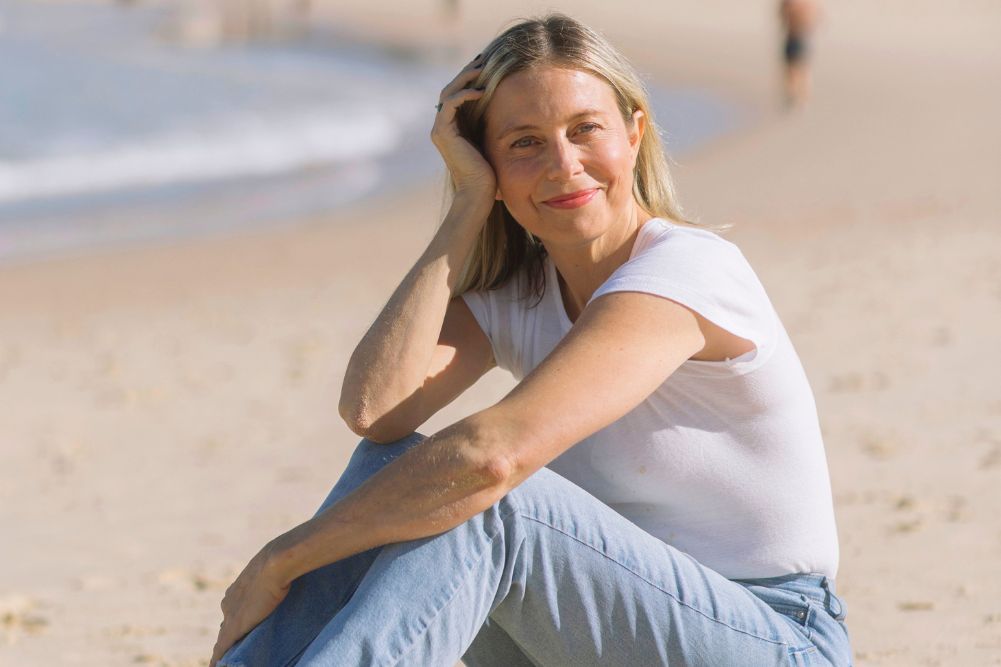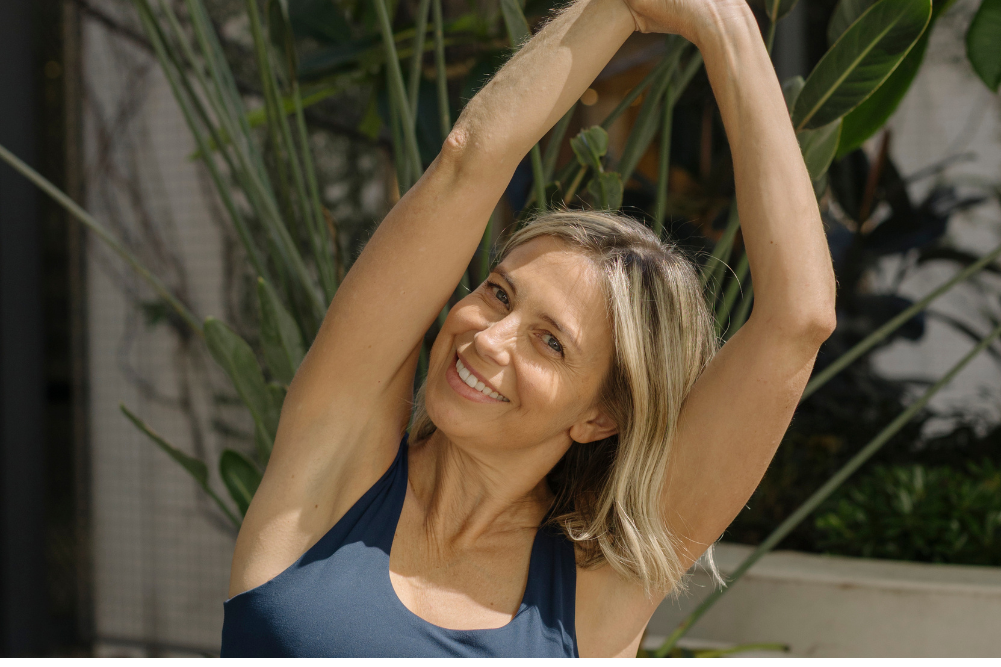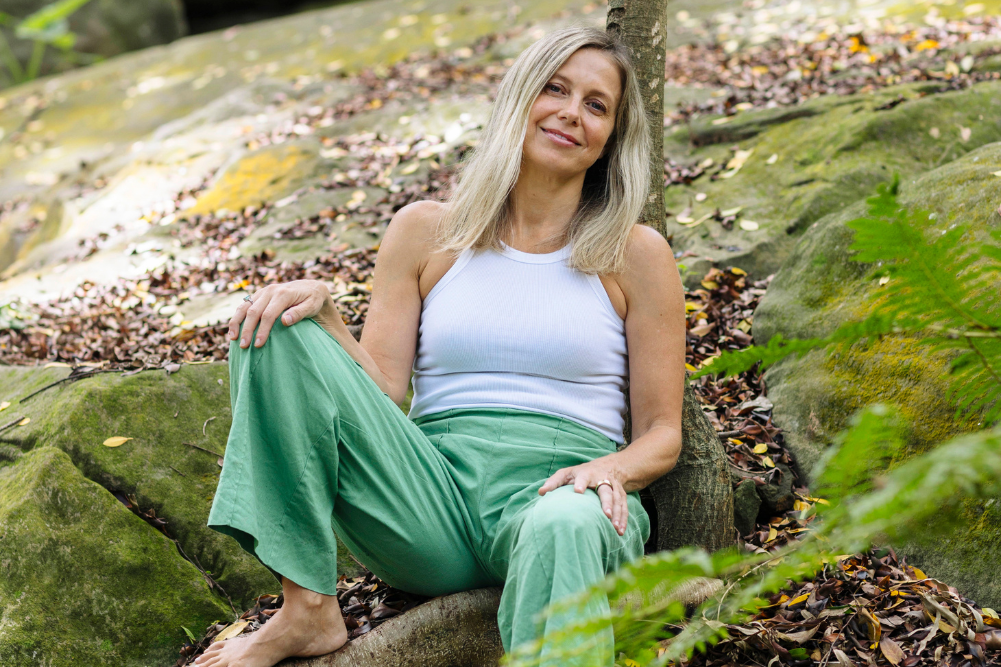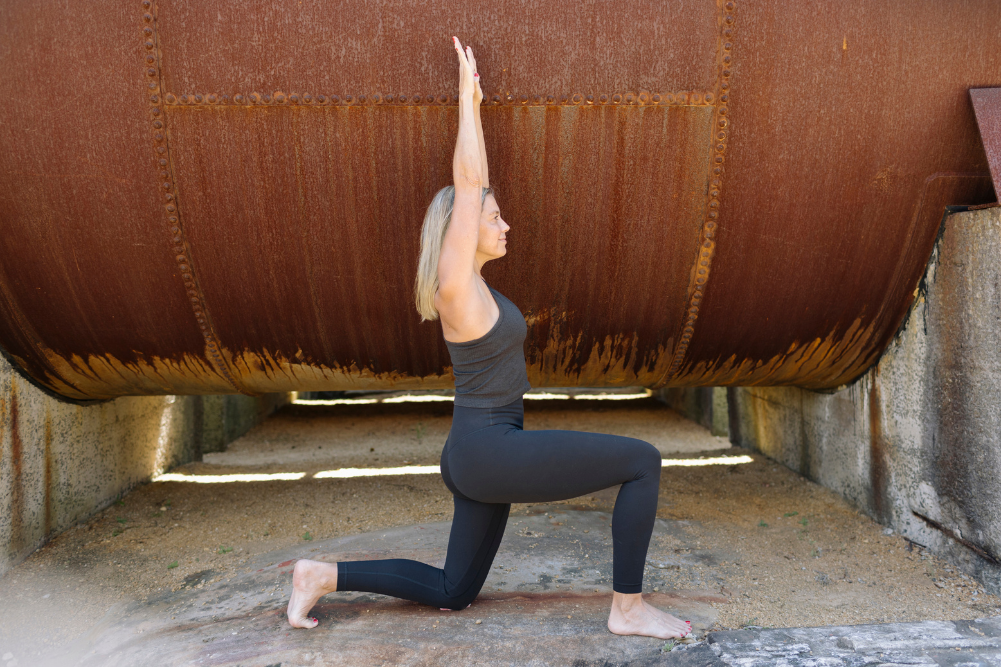Yoga to unleash your creativity
Unleash your creativity, be inspired to start something new and learn how yoga can give you the courage to keep going into the unknown.
In my career as a writer and actor, I’ve embarked on many new projects. Each time, there is a sense of anticipation, excitement and terror. I see it as a surge of energy and inspiration. There’s nothing more exhilarating and terrifying than the blank page, full of possibilities. I believe this surge is necessary in order to create anything in life, just like plugging into a power source. We need a great deal of prana to embark on anything new such as a business, relationship, health plan, renovation … it all requires concentrated prana.
Prana is our life force. From the yogi’s perspective, it runs through invisible power lines called nadis throughout the energetic body. Similar to the meridians of Traditional Chinese Medicine, these little pathways can’t be seen by the physical eye, but according to the yoga physiology they are very real and immensely powerful. Nadis have a tendency to get blocked, due to various mental, physical, emotional and spiritual stressors — life’s baggage if you will.
The practice of yoga allows you to purify stuck channels so that life force can flow and your creativity is freed.
You arrive at a particular moment ready to embark on something new, but you find yourself stuck and bogged down by your history, which manifests as blockages in the energetic body. The practice of yoga allows you to purify stuck channels so that life force can flow and your creativity is freed. When that happens, you can direct your precious energy to wherever you want it to go.
In order to facilitate this process, you need to clean out your closet. According to Patanjali, saucha or purity is one of the primary ethical practices a yogi should engage in. Clearing all the clutter from your physical, energetic and spiritual worlds can provide a feeling of spaciousness. I think of it as prepping a blank canvas — getting everything in order so you can be free to manifest. It’s generally easiest to start with the gross and then move more subtle: cleaning physical spaces like the home or working stations, cleansing the physical body by eating clean, healthy food and practicing asana, then moving inwards to purify the breath, mind and spirit through meditation and pranayama practices.
Once space is cleared, there is more clarity. This means it’s time to get very clear about what you want to create, which becomes your “intention”.
Your intention is a silent prayer, reminding you of your purpose. This time of pratyhara, or drawing the senses inward to reflect, requires you to turn off all distractions from the external world. Put the phone on aeroplane mode, feed the cat, occupy the kids, have a glass of water and then … sit and reflect.
Where your attention goes, energy flows. This is why connecting with universal source and tapping into deep wisdom allows you to create from a place of freedom and abundance. According to the yoga physiology the ajna chakra, centred between the eyebrows, is the seat of intuition. Concentrated focus on this chakra, and drawing your energy from here, allows you to access a surge of inspiration and create from a source greater than yourself. It’s how you plug into the major electricity source.
… the practice of working hard with no attachment to results is one of the most powerful teachings you can take into a new venture.
Then it’s really up to you to take conscious action and direct that energy towards starting a project. Starting anything new requires a great deal of courage. Diving into the unknown is not for the faint-hearted. That’s why so many people stick to the old, tried and tested paths, even when they don’t want to travel them any more. But here’s the thing: when you are connected to your deepest intuition and when you are courageous in following that, you will never, ever fail. It may not turn out exactly as you wish it to, sure. But whatever you gain in the process of starting something new — the lessons we learn and knowledge you gain — always outweighs any other results. This is why the practice of working hard with no attachment to results is one of the most powerful teachings you can take into a new venture.
Finding creativity
Gentle heart-openers keep us in the parasympathetic nervous system while fostering courage and open-heartedness. Being in a parasympathetic state is linked to our creativity. According to a study by Richard Boyatzis, PhD, Distinguished University Professor, “Research has shown that people are more creative and better at handling complex cognitive concepts when the PNS [peripheral nervous system] is activated.” In other words, if you want to create something and have your problem-solving brain on to resolve the inevitable challenges that arise from doing so, you don’t want to be in fight or flight mode. You want to be cool as a cucumber.
When we connect to intuition and universal consciousness, with a clear intention, calm mind and no attachment to results, we can stay very present, focusing on the task at hand. Fear and overwhelm dissolve with non-attachment. When we place all of our very precious energy on that action, we plug into the universal energy source and become very powerful indeed. This gives us the greatest chance of embarking on any new project with a “big bang”, and who knows what that can produce? Perhaps a whole new universe.
Meditation practice
Choose a comfortable seat, sukhasana (legs crossed) or virasana (kneeling in hero’s pose) — something you can stay in for a few moments. Even sitting on a chair is fine, if it means you can have a period of stillness while seated upright. The importance of sitting with a tall spine lies in the ability of prana to flow easily along the central channel sushumna. The more length we have in the spine, the more freely prana can flow. Imagine there is a piece of string on the crown of your head, lengthening the spine without stiffening. Consciously relax your face, jaw, throat and tongue. Watch your breath, the quality of the air moving in and out of the nostrils. Get curious about how it feels. Is it warmer as it moves in, and cooler as it moves out? Shift awareness to the spine. Notice if anywhere along the spine feels dull or tight, or if there are parts that feel freer. On the inhale, visualise the breath moving up this central channel, from the base of the spine, up to the crown of the head. On the exhale, watch the breath move back down from crown of head to base of spine. Inhale, breath moves from base of spine to crown of head, exhale it travels back down. The mind may wander, you just notice it has done so and come back to the breath. Continue this practice for a minimum of five minutes.
Pranayama
Nadi shodhana
The pranayama practice we are about to take is called nadi shodhana — shodhana can be translated as “to purify”, so we are literally purifying these nadis, or energetic pathways, by means of controlling the breath. It is often called alternate nostril breathing.
To practise
In your seated position, sitting with a tall spine, place the thumb of the right hand next to the right nostril. Bend the fingers slightly and place the index and middle finger between the eyebrows at ajna chakra or the third eye centre. This is the place of deep wisdom, intuition and creative power. It’s how we connect to source and plug in. Can you feel the physical connection of the fingers in that place? Shift awareness a little deeper, internally to the third eye centre. Rest the fourth and fifth finger next to the left nostril. Take a deep inhale through the nose, and exhale fully through the mouth to empty the lungs. Block the right nostril and slowly, evenly breathe in through the left. Block the left nostril and slowly exhale right. Slow and steady inhale through the right, block right nostril and exhale through the left. That is one full round. Make sure the length of the inhales and exhales are of equal ratio. It can help to take a silent count of four on the inhale and exhale to check if the lengths are even. Inhale left for a count of four. Block left, exhale right for a count of four. Inhale right for four. Block right, exhale left for four. Continue for five more rounds, extending the length of your breath if you can. If you get lost, remember to swap over sides when it’s time to exhale.
Asana
Child’s pose (balasana)
From kneeling, place the knees together and press the buttocks back to the heels. Reach the hands forward and lengthen the side body and spine. Anchor the buttocks firmly back onto heels or block. On an inhale, keep the seat anchored but come to fingertips and crawl the hands forward, lengthening side waist and spine a little more. On an exhale, place the palms back down keeping length created. Place the forehead on the earth or block so the forehead is resting down. Feel the connection of the third eye centre between the eyebrows with the earth or block. Relax the neck and allow the head to be heavy. Focus your attention on the ajna chakra as you take five conscious breaths.
Cat/cow (marjariasana)
On all fours, stack shoulders over wrists and hips over knees. Ground down through the knuckles and hug the outer arms in. Slide shoulders away from the ears. On an inhale breath, drop belly towards the earth, shoulder blades down the back and together and open the heart. On an exhale press the earth away, dome the upper back and tuck tail under feeling the naval draw in. Repeat 5–10 times.
Melting heart (anahatasana)
From all fours, keep hips above knees and walk the hands forward until the space between the eyebrows, the ajna chakra, connects with the earth or block. Again, feel the connection of your seat of intuition. Allow the head to be heavy and relax the neck. Lift the navel to the spine to support the lower back. Keep the arms active, pressing palms down. Take five conscious breaths.
Sphinx (salamba bhujangasana)
Glide the body forward and place the forearms down so the shoulders are above elbows and the wrist are in line with elbows and feet are hip-width apart. Press the backs of the feet down, especially the pinkie toes. Hug the outer hips in. Send the flesh of the buttocks back towards the heels and hug the naval towards the spine, away from the earth. Pull on the earth with the forearms sending the heart centre of the chest forward. Slide shoulder blades down the back. Keep chin parallel to the earth so the neck is long. Take five conscious breaths.
Supine twist (supta matsyendrasana)
Lie on your back. Bend the knees and bring them together. Stretch the arms out in a “T” shape or cactus the arms. Drop the knees slowly over to the left. To deepen, place the left-hand outer edge of right thigh above the knee. Let the legs be heavy. If you need to, support the left thigh with a block so both shoulder blades connect down with the earth. Take five breaths. Inhale return the knees to centre. Exhale drop them to the other side and replicate how you modified.








